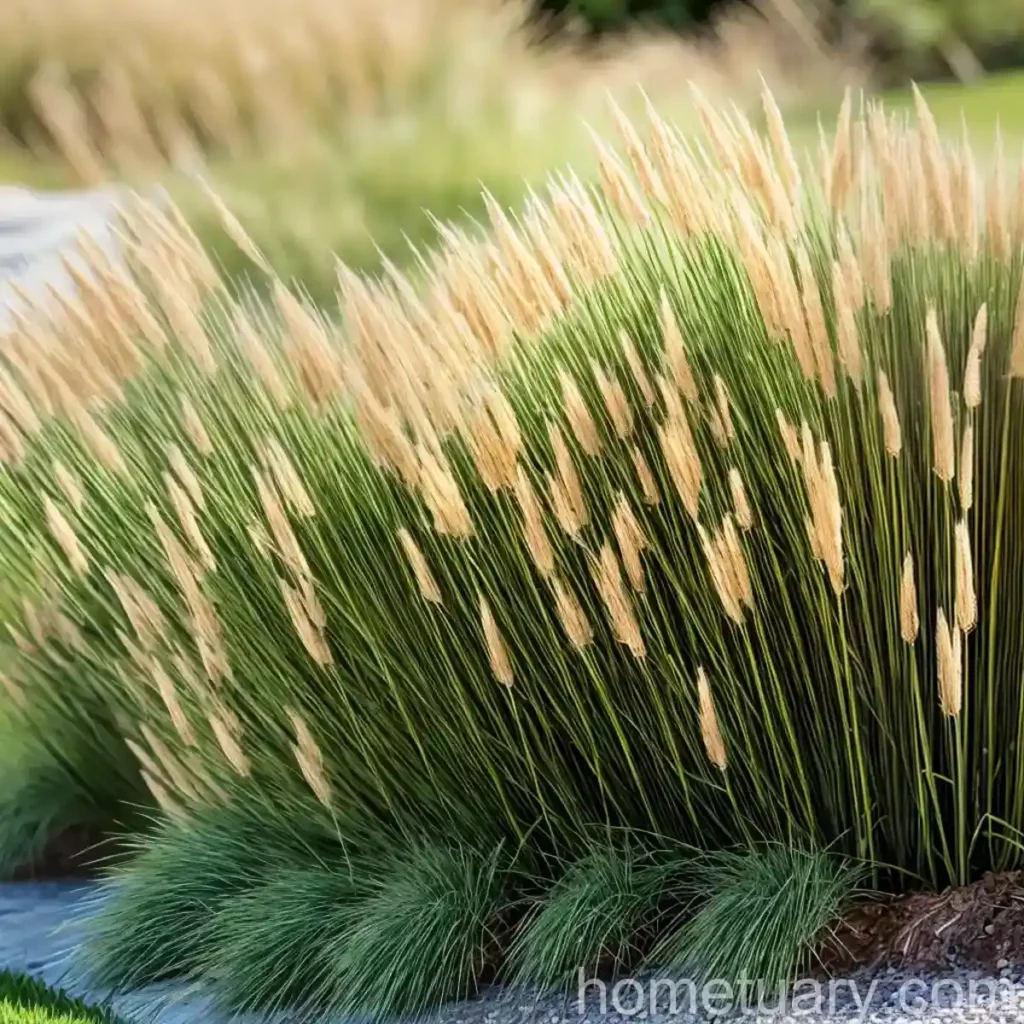Lovegrass (Eragrostis trichodes ‘Bend’): An Overview
As a passionate plant scientist, it’s always a delight to explore and understand the nuances of plant species. In this comprehensive guide, we’ll delve into the world of “lovegrass” (Eragrostis trichodes ‘Bend’), a native plant with unique characteristics, cultural significance, and a range of practical uses. From its cultivation and propagation to its role in landscaping and ecological benefits, lovegrass presents an intriguing subject for plant enthusiasts and environmentalists alike.
What is Lovegrass (Eragrostis trichodes ‘Bend’)?
Native Lovegrass Plant
Lovegrass, scientifically known as Eragrostis trichodes ‘Bend’, is a native perennial grass that belongs to the Poaceae family. Its natural habitat encompasses areas of North America, particularly the central and eastern regions. With its graceful appearance and adaptability to various environmental conditions, lovegrass has become a favored choice for both ornamental and functional purposes.
Eragrostis trichodes ‘Bend’ Description
Eragrostis trichodes ‘Bend’ is revered for its slender, arching foliage and delicate inflorescences, which add a touch of elegance to any landscape. The plant typically reaches a height of about 1 to 3 feet, forming dense clumps of striking, feathery tufts.
Lovegrass Varieties
While Eragrostis trichodes ‘Bend’ is a notable variety, the lovegrass genus encompasses several other species that exhibit diverse growth habits and adaptability to different climates. These varieties may vary in their size, color, and ecological preferences, providing a range of options for landscape designers and conservationists.
Key Takeaways – Lovegrass (Eragrostis trichodes ‘Bend’)
Before delving into the specifics of lovegrass care, cultivation, and applications, let’s highlight the key takeaways that encapsulate the essence of this unique plant:
-
Native Perennial Grass: Eragrostis trichodes ‘Bend’ is a native perennial grass species, offering ecological significance and aesthetic appeal in various landscapes.
-
Graceful Appearance: The graceful arching foliage and delicate tufts of lovegrass make it a visually enchanting addition to gardens, natural areas, and urban spaces.
-
Adaptability: Lovegrass exhibits adaptability to a range of environmental conditions, making it suitable for diverse climates and soil types.
-
Eco-Friendly Uses: Beyond its ornamental value, lovegrass serves practical purposes such as erosion control, wildlife habitat enhancement, and water conservation in landscaping and restoration projects.
-
Cultural Significance: Lovegrass holds cultural significance in certain regions, where its use in traditional practices and ceremonies underscores its historical and social relevance.
Now, let’s explore the intricacies of cultivating and caring for lovegrass, shedding light on its cultural, ecological, and practical aspects.
Culture
Lovegrass Plant Care
Caring for lovegrass involves understanding its specific cultural requirements, including water, sunlight, soil, and fertilizer needs. By providing optimal conditions, you can ensure the healthy growth and thriving of this enchanting grass species.
Growing Eragrostis trichodes ‘Bend’
The successful cultivation of Eragrostis trichodes ‘Bend’ hinges on attentive care during its growing stages, with a focus on fostering strong, vibrant plants that contribute positively to their surroundings.
Lovegrass Cultivation Tips
Effective cultivation tips can make a significant difference in the growth and development of lovegrass, ensuring that it thrives and serves its intended purpose, whether ornamental or functional.
Lovegrass Landscaping Ideas
Integrating lovegrass into landscaping projects offers a wealth of creative opportunities, ranging from accentuating natural areas to enhancing the visual appeal of urban and suburban landscapes.
Benefits of Lovegrass Plant
Understanding the multitude of benefits associated with lovegrass plants is crucial for fostering appreciation and promoting their widespread use in various settings, from private gardens to public parks.
Lovegrass Plant Characteristics
Exploring the distinctive characteristics of lovegrass plants sheds light on their adaptability, ecological relevance, and ornamental qualities, providing valuable insights for plant enthusiasts and conservationists.
Lovegrass Plant Uses
By understanding the diverse practical uses of lovegrass, individuals and organizations can harness its potential for diverse applications, including environmental restoration, water conservation, and sustainable landscaping.
Cultivation
Water
Sunlight
Fertilizer
Soil
Pruning
Propagation
Container Popularity
Container
Health and Maintenance
Common Diseases
Disease Diagnosis
Common Pests
Botanist’s Tips
Fun Facts
Links to External Resources
Conclusion
In conclusion, lovegrass (Eragrostis trichodes ‘Bend’) stands as a testament to the beauty and functionality of native plant species. It offers a harmonious blend of ornamental appeal, ecological benefits, and practical uses, making it a valuable asset in diverse landscapes and conservation efforts. By immersing ourselves in the cultivation, care, and cultural significance of lovegrass, we gain a deeper appreciation for the inherent value of native flora and the role it plays in enriching our surroundings and preserving the natural world.
This article contains general information only and is not intended as a definitive guide to the cultivation of Eragrostis trichodes ‘Bend’. Specific care requirements may vary based on local climate, soil conditions, and other factors. For cultivating and caring for lovegrass, it is advisable to consult reliable gardening references and seek advice from local horticultural experts and extension services.
References:
- “All About Lovegrass” – Native Plant Trust, www.nativeplanttrust.org
- “Eragrostis trichodes ‘Bend’: A Native Grass for Landscaping” – University of Florida IFAS Extension, edis.ifas.ufl.edu
- “Ornamental Grasses” – The Morton Arboretum, www.mortonarb.org/plantadvice
- “Gardening with Native Plants” – Lady Bird Johnson Wildflower Center, www.wildflower.org/npm
- “The Grass Family: Poaceae” – Royal Botanic Gardens, Kew, www.kew.org/ Poaceae















